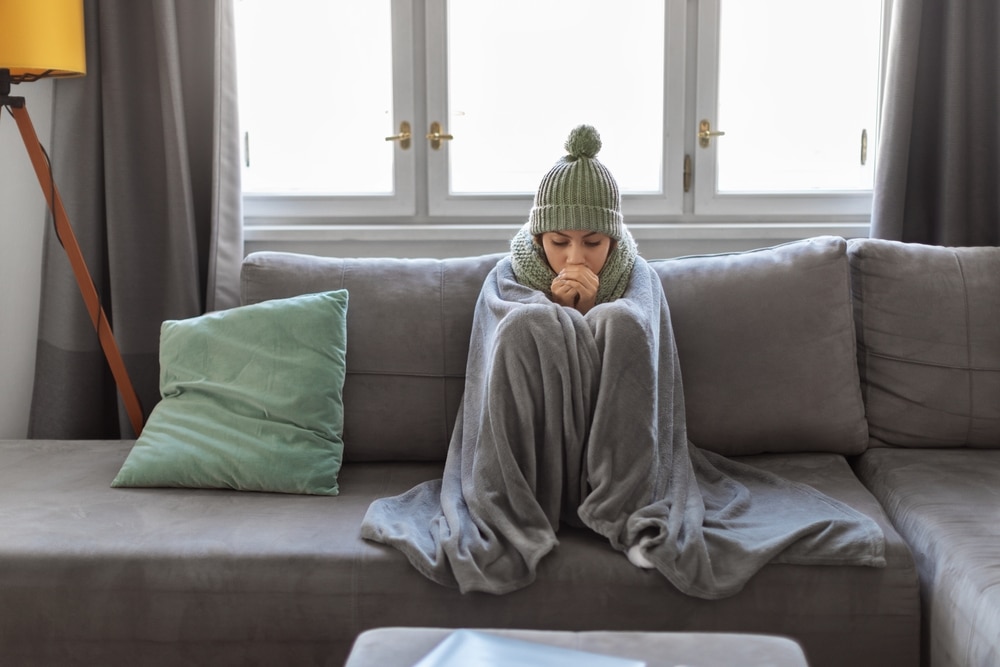Unseen Dangers: How Living in a Cold Home Can Impact Your Health and Well-being
As the temperatures dip and winter settles in, many of us can feel the cold creeping into our homes, leaving us shivering both physically and mentally. When your living space feels like a chilly icebox, it’s more than a minor inconvenience — it can open the door to a host of serious health issues. Here, we’ll explore four significant dangers of enduring life in a cold home.
First, let’s talk about breathing challenges. Cold air can irritate your respiratory system, making you more susceptible to common ailments like coughs and colds, and, in more severe cases, bronchitis or even pneumonia. This risk escalates for children and those with existing health issues. In fact, studies have shown that kids living in freezing conditions are nearly 50% more likely to develop wheezing. If you’ve noticed a persistent cough in your little ones this winter, it might not be just a cold—rather, it could be the chill in your home contributing to their discomfort. So, it’s essential to pay attention to your living environment.
Then there are heart health concerns. Have you ever shivered uncontrollably? That’s your body’s way of trying to regulate its temperature, and in colder environments, your blood pressure may rise to keep your heart pumping effectively. For those who have pre-existing heart conditions, this can be particularly alarming, as the risk of heart attacks increases. It’s a tough situation; not only do you have to deal with the discomfort of the cold, but your heart also suffers in silence.
Let’s not forget about compromised immune function, either. Living in a home where the temperature consistently lingers below roughly 59 degrees Fahrenheit (or 15 degrees Celsius) can hinder your immune response. It becomes tougher for your body to fend off those nasty bugs when it’s working overtime just to keep you warm. After being exposed to this prolonged cold, you might start noticing you’re catching those infections and illnesses more frequently than ever before. Nobody wants to spend the winter nursing colds!
Another downside to cold environments is musculoskeletal pain. If you’ve ever felt achy after spending a long day in a cold room, you’re not alone. Colder temperatures cause muscles to tighten, leading to discomfort and stiffness. This can be a nightmare for those suffering from arthritis, worsening existing pain. Plus, let’s be real: those icy floors can become a hazardous arena, increasing the risk of slips and falls, especially for our older loved ones.
So, what temperature is too cold for comfort at home? Experts suggest keeping the thermostat between 64 degrees F and 75 degrees F, particularly for young children and the elderly. Adhering to these recommendations aligns well with guidelines from health organizations, but remember — each individual may have different sensitivities. If you know someone with chronic respiratory issues, they might need a toastier environment to feel comfortable and to avoid flare-ups.
Winter can also take a toll on our mental well-being. Those long, dark nights can lead to mood changes that surprise you. Research out of the UK discovered a startling statistic: people moving into cold homes are about 1.5 times more likely to experience significant distress compared to those snuggled up in warmer environments. If you find yourself skipping out on social gatherings this winter, it could be correlated with how cold it is inside. You may feel more isolated and lonely, which is a tough reality to face.
And let’s touch on seasonal affective disorder (SAD). The lack of sunlight during colder months can leave you feeling persistently sad. It’s easy to find yourself wading through feelings of fatigue, irritability, and inability to concentrate—all while bundled under a pile of blankets. The additional stress of feeling uncomfortable at home only compounds these emotions, making it vital to assess and improve your living situation.
What can you do to mitigate the risks associated with a cold home? Here are three practical steps to create a cozier, healthier environment:
First off, consider improving your home’s insulation. This is one of the most effective ways to keep heat trapped inside. Start by checking your windows, doors, and any nooks and crannies for drafts. You might be amazed at how much warmth slips through those tiny gaps! Weather stripping or caulking can be lifesavers here, sealing up those openings and keeping the cold outside where it belongs.
Next, think about upgrading your windows. Investing in energy-efficient windows can work wonders for heat retention. When shopping for windows, pay attention to the U-factor and the solar heat gain coefficient (SHGC). The U-factor tells you how well the window insulates and the SHGC indicates how much solar heat gets let in — ideally, you want a window with a low U-factor and high SHGC to maximize energy efficiency.
Finally, consider installing a smart thermostat. This nifty gadget allows you to customize your heating schedule based on your day-to-day routine, meaning your home is warm when you need it, all while potentially lowering your heating bills. Energy Star smart thermostats can save you a whopping 8% annually on your energy expenses — now that’s a win-win situation!
Taking steps to prepare your home for winter is essential for both your physical health and mental well-being. Living in a cold house can lead to a slew of health issues, from breathing troubles to heart stress and feelings of isolation. So, take a moment to assess your living conditions. This winter, make your home a warm and inviting safe haven, so you can enjoy the season without the chill weighing you down.
















